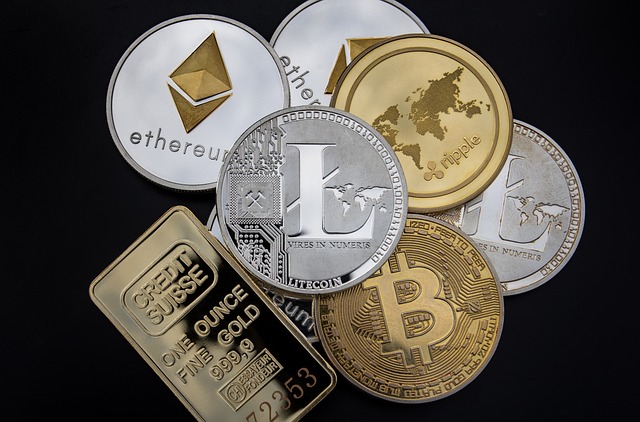In the ever-evolving landscape of blockchain technology, Ethereum stands as a trailblazer, paving the way for decentralized applications, smart contracts, and innovations like DeFi (Decentralized Finance) and NFTs (Non-Fungible Tokens). Let's delve into the intricacies market of Ethereum, exploring how it has become a driving force behind the decentralized revolution.
Ethereum: A Pioneer in Smart Contracts
Launched in 2015 by the prodigious developer Vitalik Buterin, Ethereum introduced the concept of smart contracts, self-executing agreements with the terms directly written into code. This breakthrough fundamentally changed the blockchain landscape by enabling developers to create decentralized applications (DApps) on its platform.
The carrying out of agreements is automated and maintained using smart contracts, do away without the need for brokers. This improves security and transparency while also reducing costs. Ethereum's Turing-complete programming language, Solidity, empowers developers to craft complex smart contracts, giving rise to a myriad of decentralized applications.
DeFi on Ethereum: Revolutionizing Finance
One of Ethereum's most significant contributions is the rise of DeFi, a decentralized financial ecosystem challenging traditional banking systems. DeFi platforms leverage smart contracts to provide services like lending, borrowing, and trading without relying on centralized authorities. Ethereum's programmable nature enables the creation of protocols like Aave, Compound, and Uniswap, revolutionizing how people interact with financial services.
The decentralized nature of DeFi not only fosters financial inclusion but also reduces the risk of censorship and fraud. However, challenges such as scalability and gas fees have prompted Ethereum to explore upgrades like Ethereum 2.0, aiming to enhance its performance and sustainability.
NFTs: Ethereum's Artistic Revolution
Ethereum has also played a pivotal role in the rise of NFTs, transforming the art and entertainment industries. NFTs are unique digital tokens that represent ownership of digital or physical assets, often used for digital art, music, and virtual real estate. Ethereum's ERC-721 and ERC-1155 standards provide the foundation for creating and trading these one-of-a-kind tokens.
Artists and creators can tokenize their work, ensuring provable ownership and enabling new revenue streams through royalties on secondary sales. The Ethereum-based marketplace, OpenSea, has become a hub for NFT trading, showcasing the diversity of digital assets and the immense potential of blockchain in the creative realm.
Challenges and Ethereum 2.0
Despite its successes, Ethereum faces challenges, notably scalability issues and high transaction fees. Ethereum 2.0, a significant upgrade, aims to address these concerns by transitioning from a proof-of-work to a proof-of-stake consensus mechanism. This transition enhances scalability, reduces energy consumption, and makes the network more sustainable.
Ethereum 2.0 introduces shard chains, allowing the network to process multiple transactions simultaneously, significantly improving throughput. Additionally, the upgrade incentivizes users to become validators by staking their Ethereum, further securing the network.
Cardano: A Sustainable and Scalable Blockchain Alternative
While Ethereum has been a pioneering force, other blockchain platforms are vying for prominence, and Cardano is a notable contender. Founded by Ethereum co-founder Charles Hoskinson, Cardano emphasizes sustainability, scalability, and interoperability.
Sustainability Through Peer-Reviewed Research
Cardano's development is grounded in academic research and a commitment to peer-reviewed protocols. This approach aims to create a more robust and secure blockchain. By subjecting their technology to rigorous scrutiny, Cardano seeks to build a foundation that can withstand the test of time and industry demands.
Scalability and Interoperability
Cardano's Ouroboros proof-of-stake consensus algorithm addresses scalability concerns by enabling the network to process transactions efficiently. Furthermore, Cardano aims to enhance interoperability, allowing seamless communication and transactions between different blockchain platforms.
Conclusion: A Diverse Blockchain Future
As the blockchain landscape continues to evolve, Ethereum and Cardano exemplify the diversity of approaches to building decentralized systems. Ethereum's pioneering work in smart contracts, DeFi, and NFTs has laid the groundwork for a decentralized future, while Cardano's commitment to sustainability and scalability presents a compelling alternative.
Both platforms contribute significantly to the ongoing narrative of blockchain technology, pushing boundaries and opening new possibilities. As Ethereum undergoes its ambitious Ethereum 2.0 upgrade, and Cardano continues to develop its ecosystem, the future of decentralized applications, finance, and innovation promises to be vibrant and transformative.





0 Comments